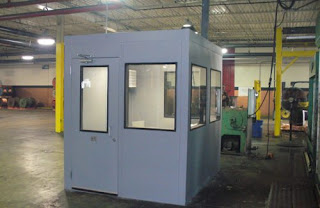Things you should know about Outdoor air compressor enclosure
O’Neill Engineerd Systems has ample experience in solving noise control solutions of outdoor air compressor enclosure. This is possibly the most common application we have faced. There is an air compressor in almost every shop that creates noise every time the motor kicks on, irritating the people that work around it. Here we explain our approach to successfully quieting the air compressor with sound curtains without restricting airflow and access.

The first step is deciding the compressor location. Generally, they are against the wall or at a corner. The least common location of the compressor is the middle portion of the room. Next, we have to know how high the ceilings are in the high school band room. Both the ceiling height and the compressor location play a role in the design of sound curtain enclosure.
In free space, the air compressor radiates sound in all the directions and you can hear the actual sound level. When the air compressor is set in a space with low ceilings or next to the wall in a corner, you will hear both the reflected sound and direct sound from the air compressor coming off the walls and ceiling, making the noise levels of the air compressor louder. You can take some additional precautions by installing an acoustic sliding door.
You will notice that sound curtain enclosures with a room come with hoods of baffles for cooling equipment. For air compressor applications, we generally use passive ventilation. The concept is that you find silenced air intake as low as possible on the side wall noise panels and also find the silenced air discharge on the roof. As the hot air rises and gets out of the discharge vent, it draws in fresh air.



Comments
Post a Comment